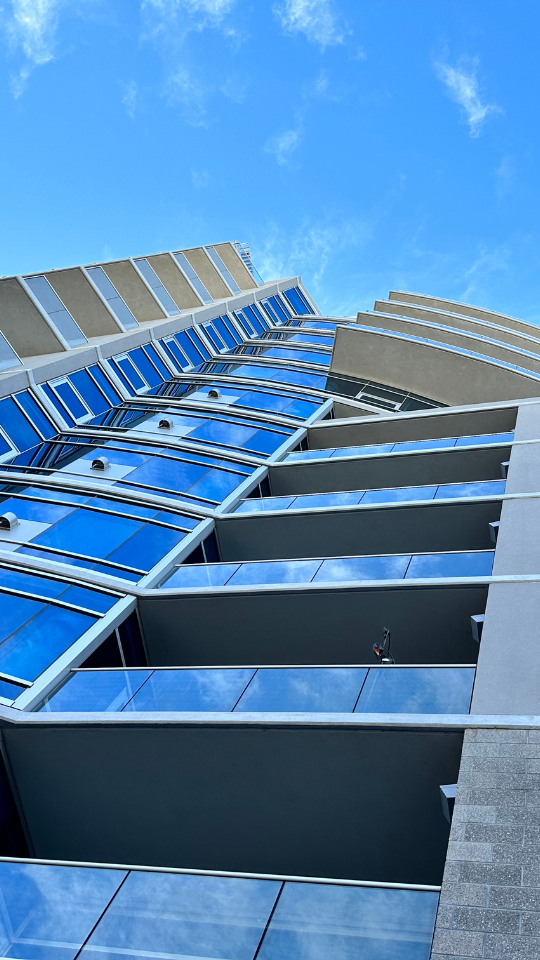Banner Health has initiated construction on a new medical campus at Power and Germann roads in Mesa, representing a $400 million investment. The facility will feature a 120-bed hospital and an adjoining medical office building, expected to create approximately 1,000 new healthcare jobs upon completion in 2026. This expansion will meet the city’s rising population demands, supporting health-sector growth while enhancing regional tax revenue through increased employment and property values. The project aligns with state healthcare expansion policies and leverages Banner’s reputation for operational excellence. Designed with LEED standards in mind, the development aims for energy efficiency and low water use, enhancing its long-term value proposition. The project team includes architects from HKS, Inc., with Layton Construction as the builder, both of whom have delivered similar large-scale facilities for Banner throughout Arizona. Community feedback points to broad support for improved access to care and economic stimulus.

A September 2025 report details impact-fee fund balances and system-area consolidations under the updated rate study, including consolidating multiple water and wastewater service areas; the Utility Billing page confirms the active study guiding council on future rates and fees. Wealth planning for infill and hillside product should include potential fee adjustments. Taxes and fees fund water resiliency, slope stability and fire-wise infrastructure. Regulation is driven by the Land Development Code and P&Z hearings. Value stability benefits from infrastructure investment pacing. Smart-city elements include GIS service-area mapping and data-driven fee models.
The city’s Downtown Campus Reinvestment initiative outlines renovations to City Hall, the parking garage, council chambers and adjacent facilities, signaling long-life-cycle upgrades to public spaces that support surrounding private investment and event activity; council meetings and planning hearings through mid-2025 also tracked zoning text amendment considerations, underscoring an active policy pipeline. Wealth and family office strategies view civic improvements as tailwinds for nearby assets. Tax capacity benefits from rising property and sales activity in revitalized cores. The regulatory context coordinates capital planning with zoning updates. Value durability ties to institutional anchors and placemaking. Smart-city integration spans safety, traffic and digital public-service access.
In February 2025, planners tabled the Anthem East preliminary plat in Florence for additional revisions, with developers indicating a shift from 3,290 to ~3,137 lots at ~3.37 units/acre on ~983 acres near Hunt Highway and Felix Road; the action illustrates current scrutiny on circulation, infrastructure, and density balance at the master-planned community’s edge. For wealth holders, timeline extensions alter absorption and carry-cost assumptions. Tax revenue timing similarly shifts with delivery cadence. Regulatory oversight remains focused on phasing, traffic, drainage and General Plan alignment. Value stability remains supported by established amenities in the core while new phases are sequenced. Smart-growth elements involve coordinated arterials, utilities and open-space networks.



 Arizona Cardinals’ $136 Million “Headquarters Alley” Project: How a 217-Acre Deal Will Redefine North Phoenix by 2028
Arizona Cardinals’ $136 Million “Headquarters Alley” Project: How a 217-Acre Deal Will Redefine North Phoenix by 2028 Public Safety as an Asset Class: The New Scottsdale AdvantageIn today’s Smart City economy, safety isn’t simply about peace of mind—it’s becoming a measurable, marketable asset class. Scottsdale is proving that public safety can be engineered into the fabric of
Public Safety as an Asset Class: The New Scottsdale AdvantageIn today’s Smart City economy, safety isn’t simply about peace of mind—it’s becoming a measurable, marketable asset class. Scottsdale is proving that public safety can be engineered into the fabric of
 Scottsdale, Chandler, Gilbert, and Peoria all landed within the top 10 U.S. metros—celebrated for rental affordability, job access, lifestyle quality, and even renter protectionsArizona’s East Valley has quietly emerged as a standout for renters, with Scottsdale, Chandler, Gilbert, and Peoria all landing among the top 10 U.S. metro areas in WalletHub’s 2025 “Best & Worst
Scottsdale, Chandler, Gilbert, and Peoria all landed within the top 10 U.S. metros—celebrated for rental affordability, job access, lifestyle quality, and even renter protectionsArizona’s East Valley has quietly emerged as a standout for renters, with Scottsdale, Chandler, Gilbert, and Peoria all landing among the top 10 U.S. metro areas in WalletHub’s 2025 “Best & Worst  Is This Evidence of Deurbanization?Redfin notes about 28 % more single-family sellers than buyers, while condos have 83 % more sellers than buyers
Is This Evidence of Deurbanization?Redfin notes about 28 % more single-family sellers than buyers, while condos have 83 % more sellers than buyers Exploring Arizona’s Unique Land Ownership Laws: What Every Future Homeowner, Investor, And Relocating Professional Needs To KnowArizona’s real estate market is unlike any other in the American Southwest. While rapid population growth and migration trends have made Phoenix, Scottsdale, Mesa, and Tucson some of the fastest
Exploring Arizona’s Unique Land Ownership Laws: What Every Future Homeowner, Investor, And Relocating Professional Needs To KnowArizona’s real estate market is unlike any other in the American Southwest. While rapid population growth and migration trends have made Phoenix, Scottsdale, Mesa, and Tucson some of the fastestNice to meet you! I’m Katrina Golikova, and I believe you landed here for a reason.
I help my clients to reach their real estate goals through thriving creative solutions and love to share my knowledge.

